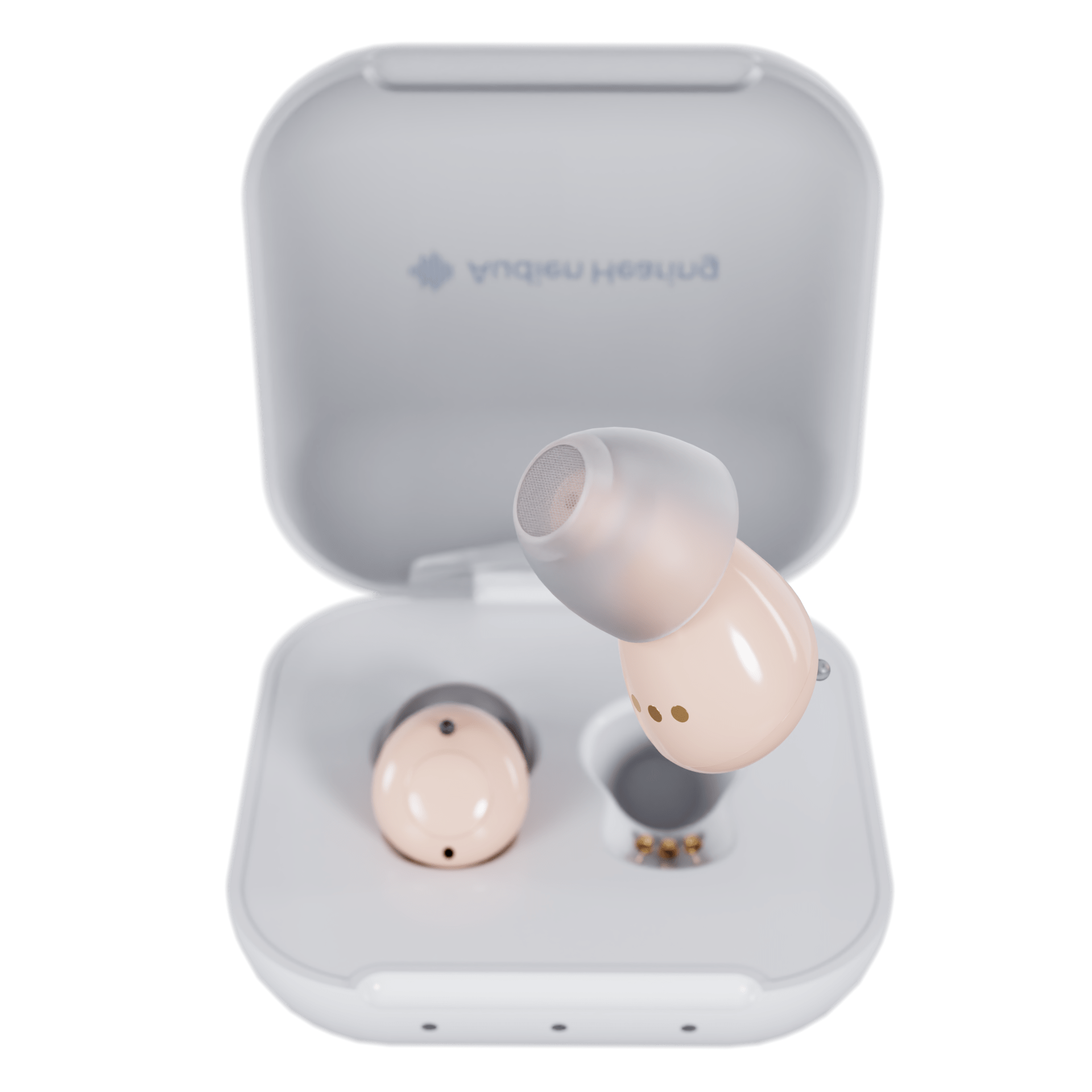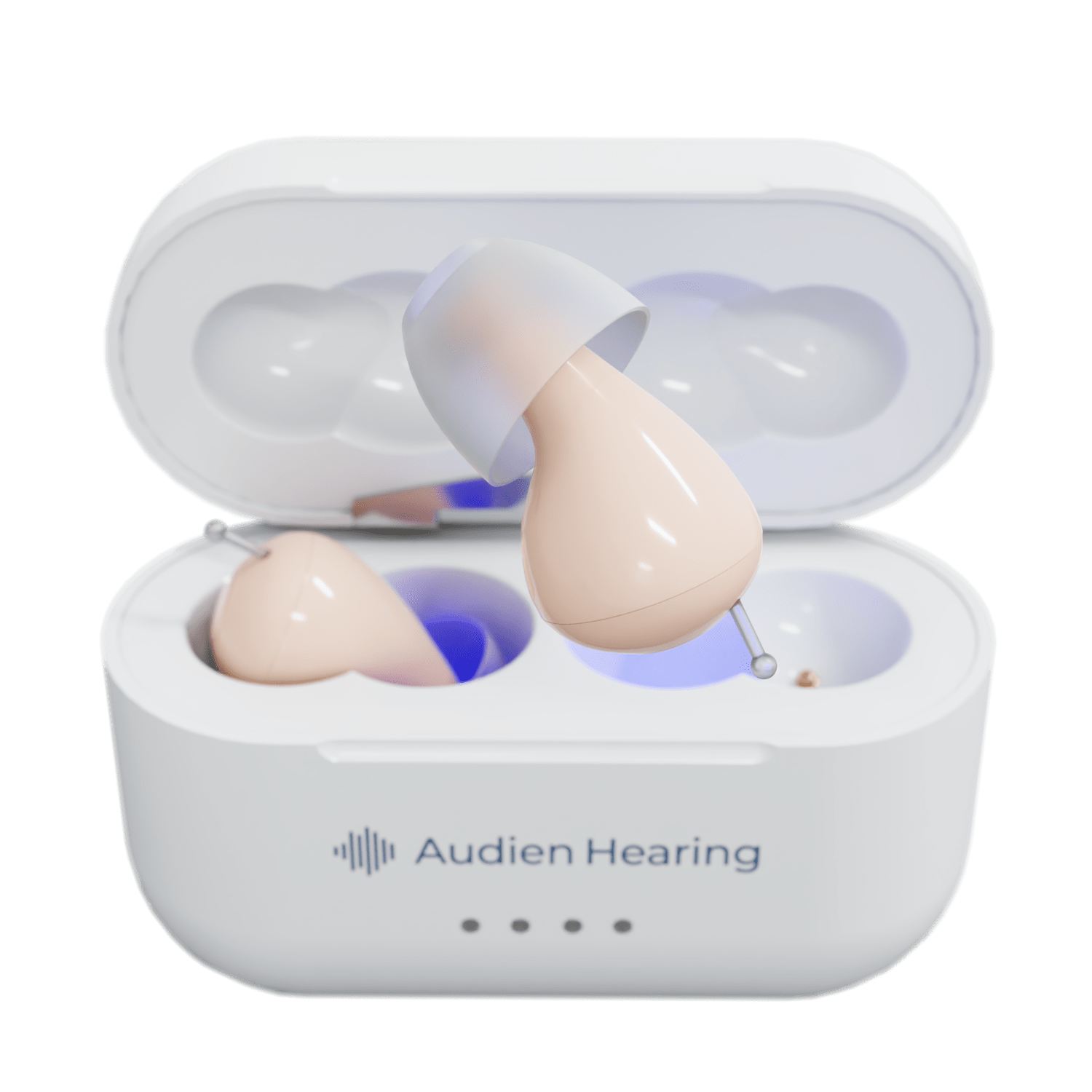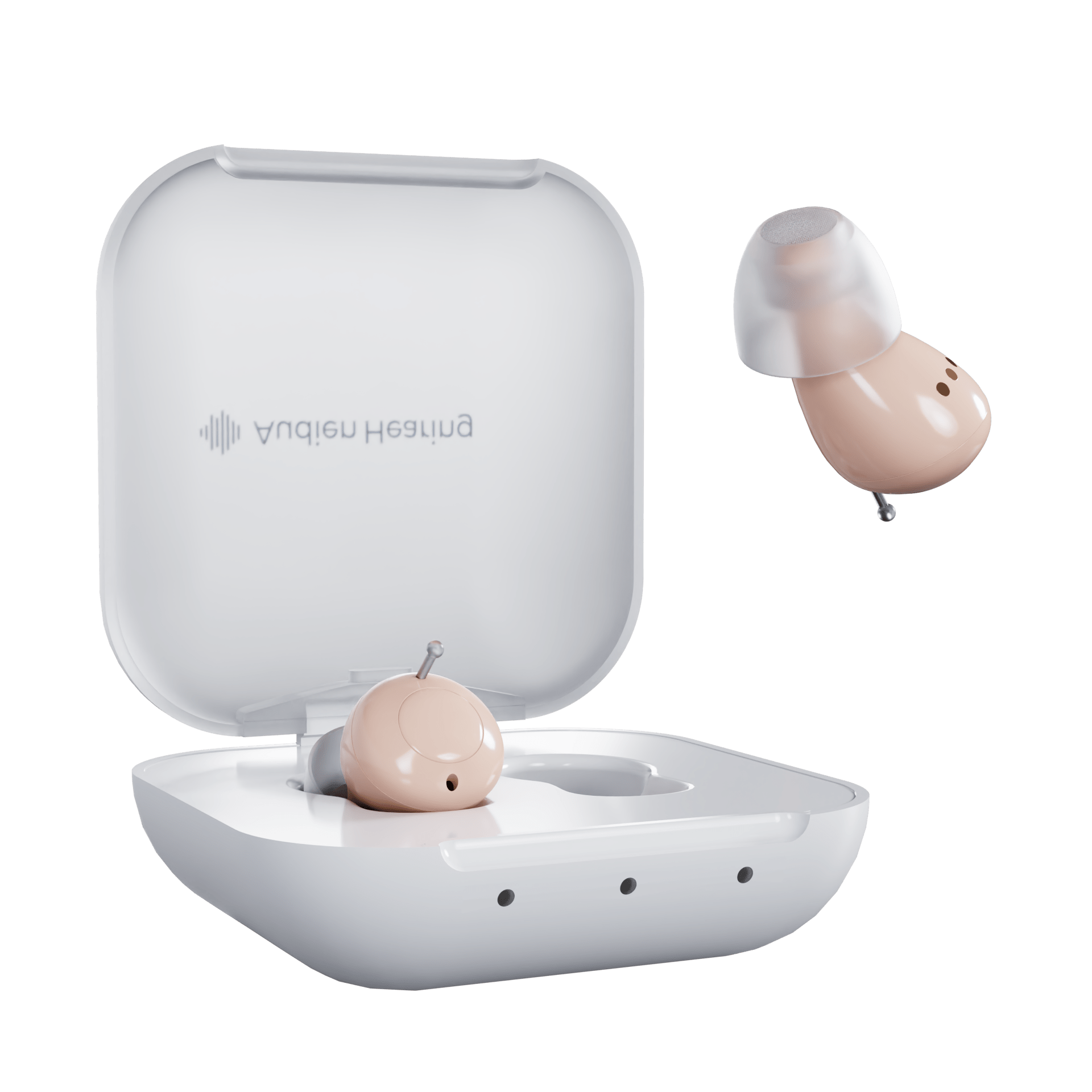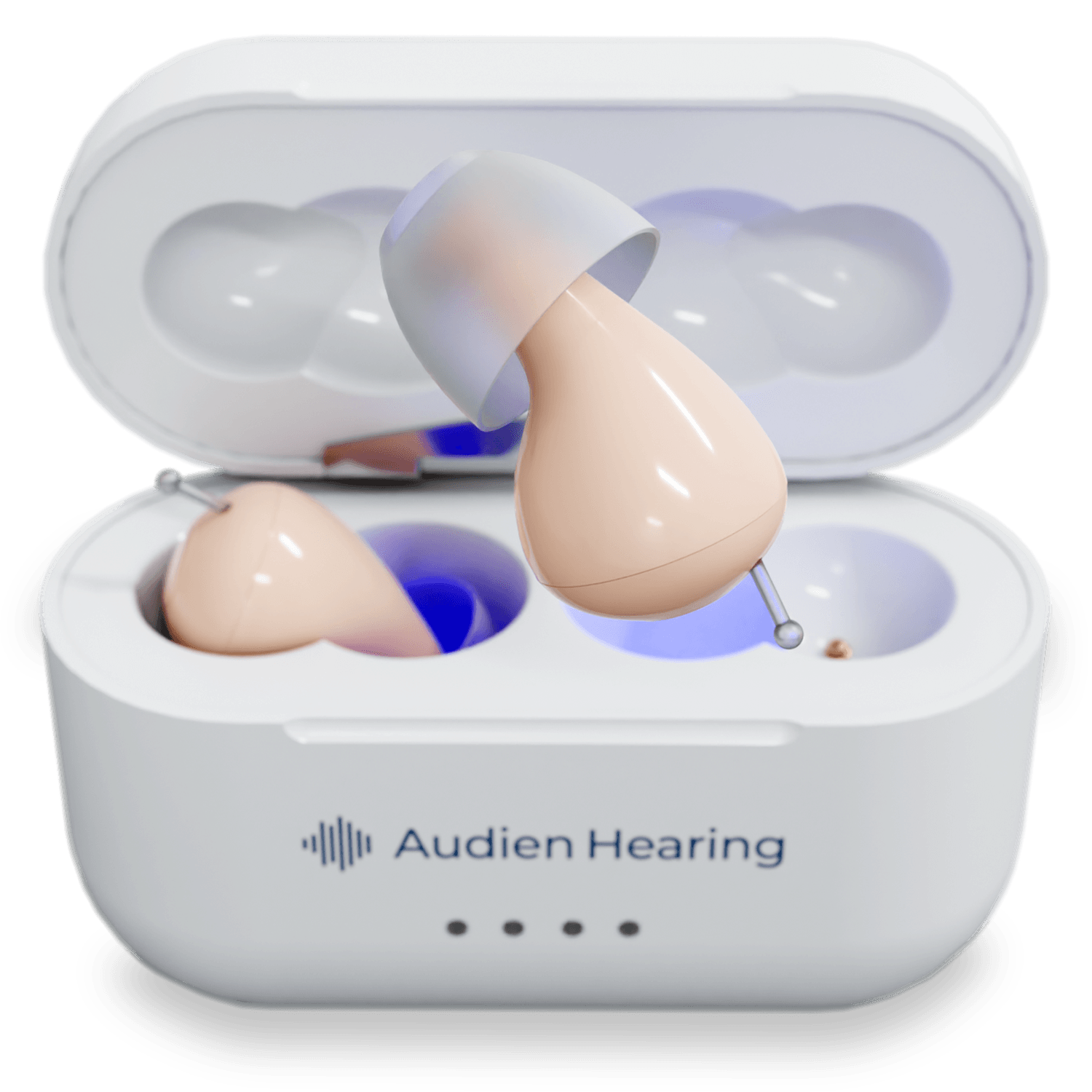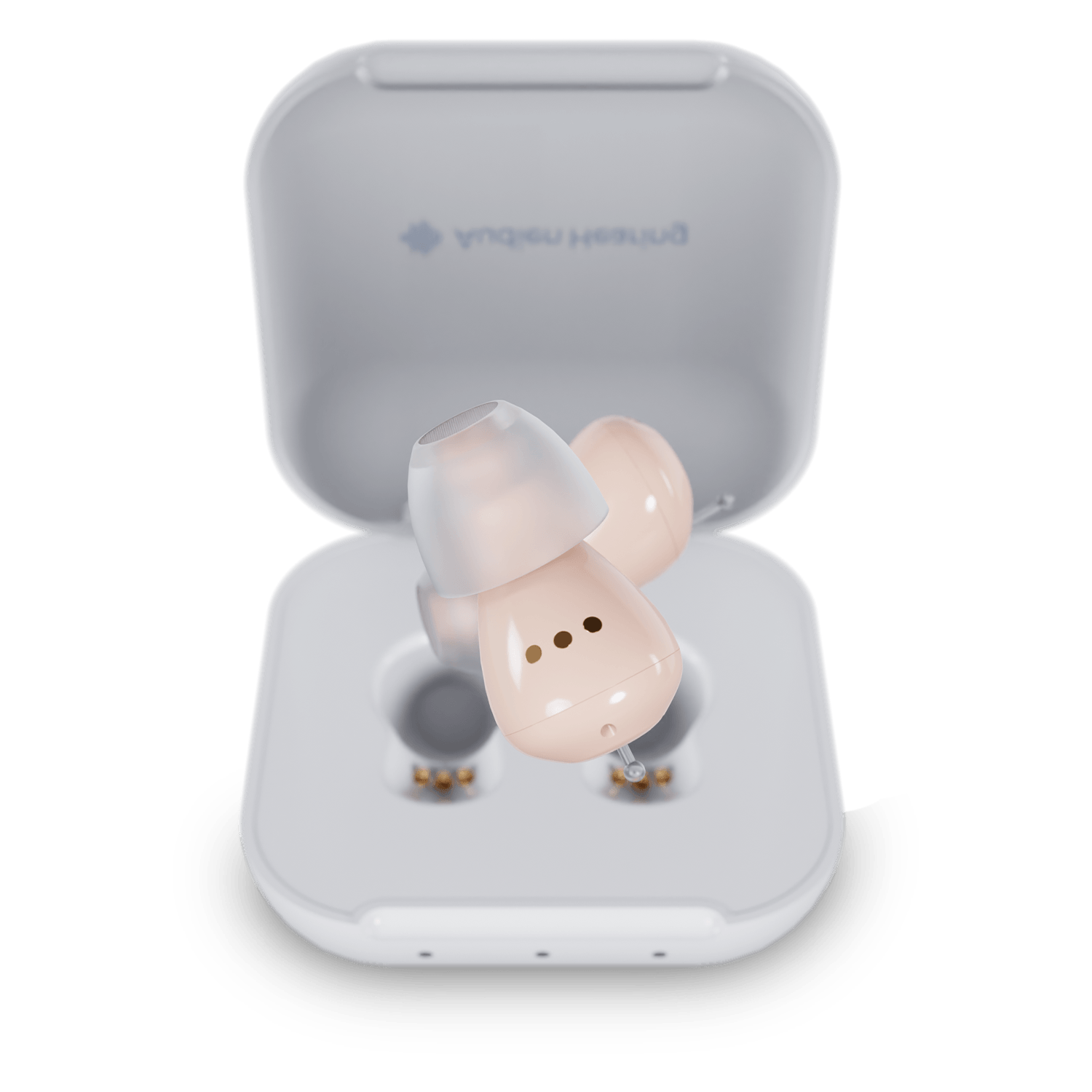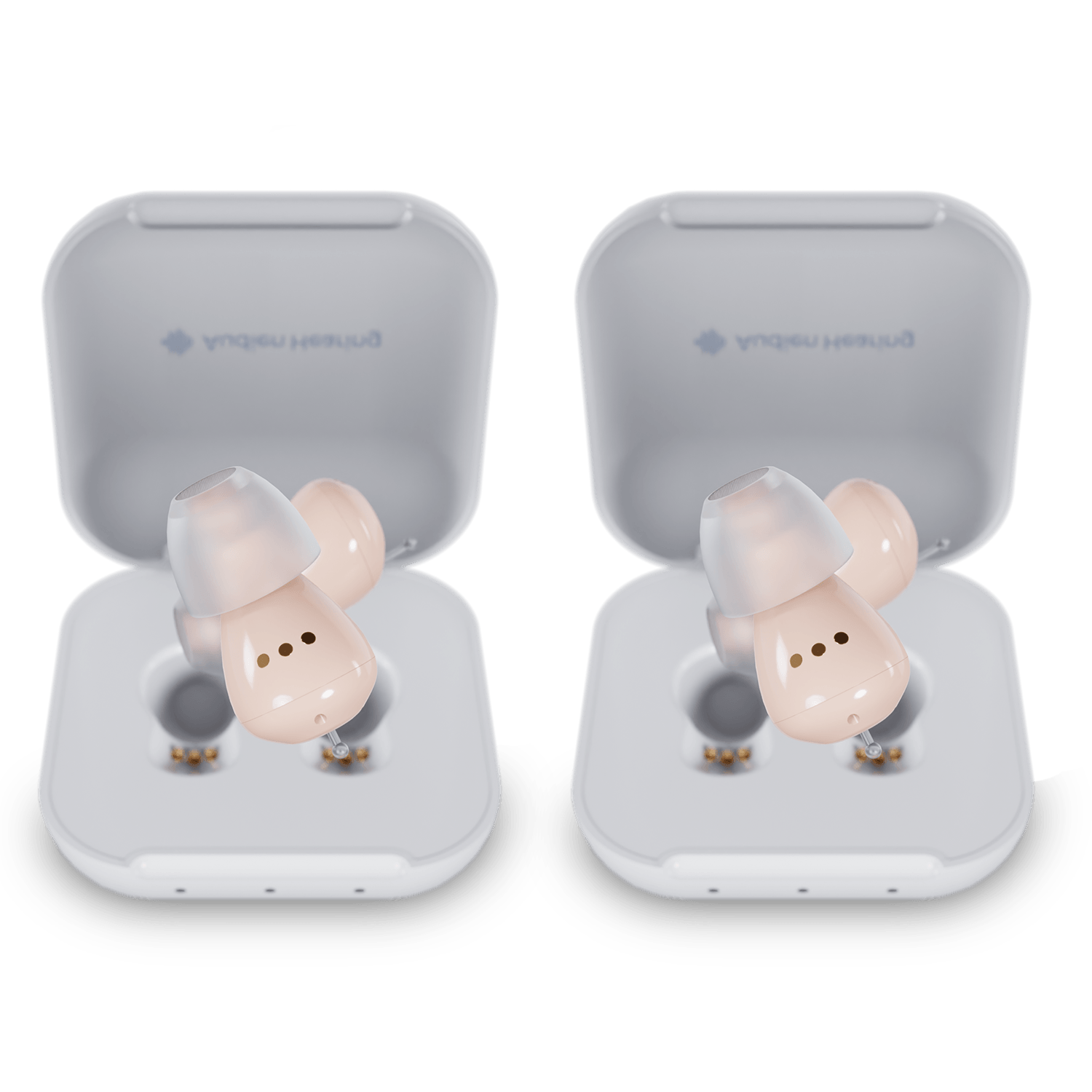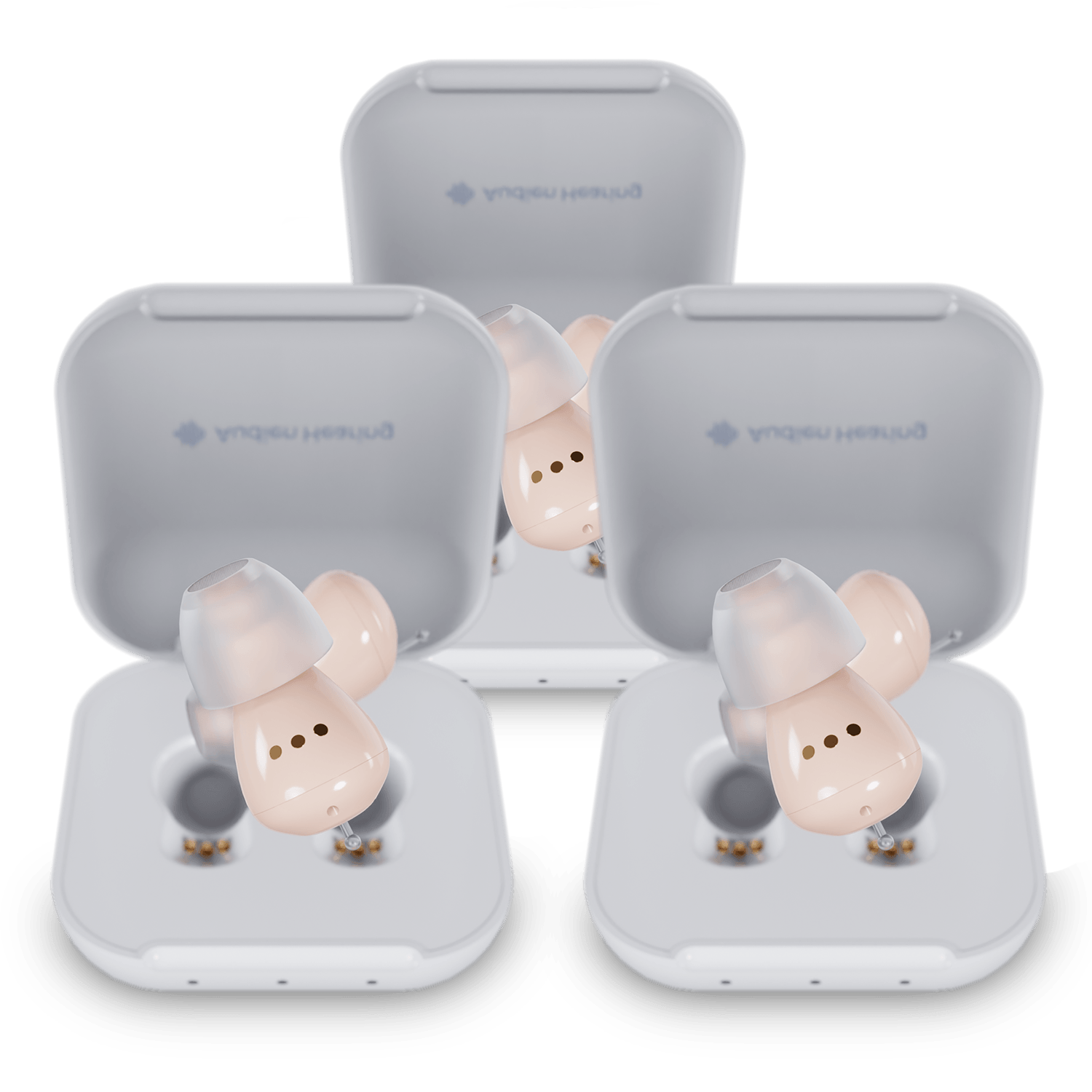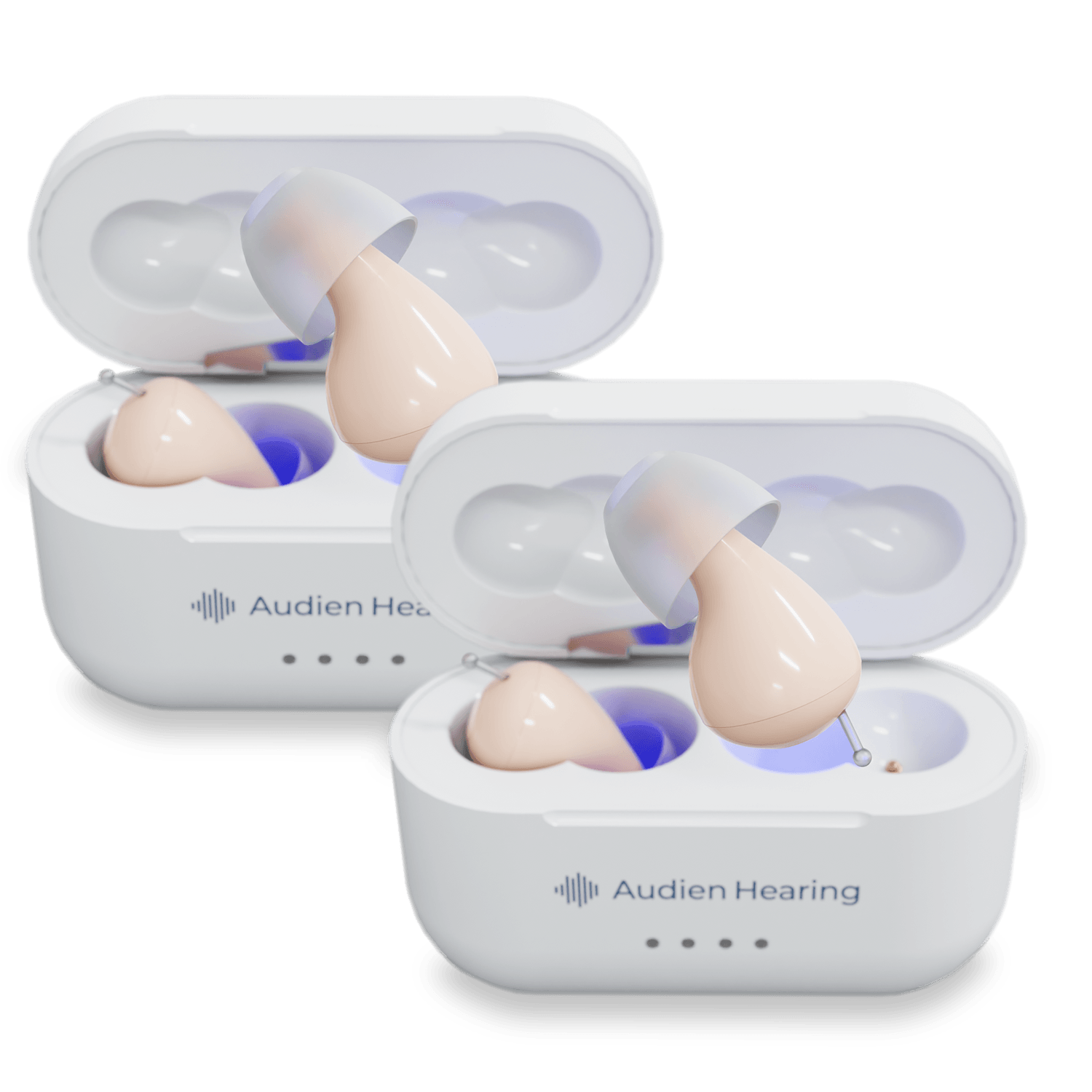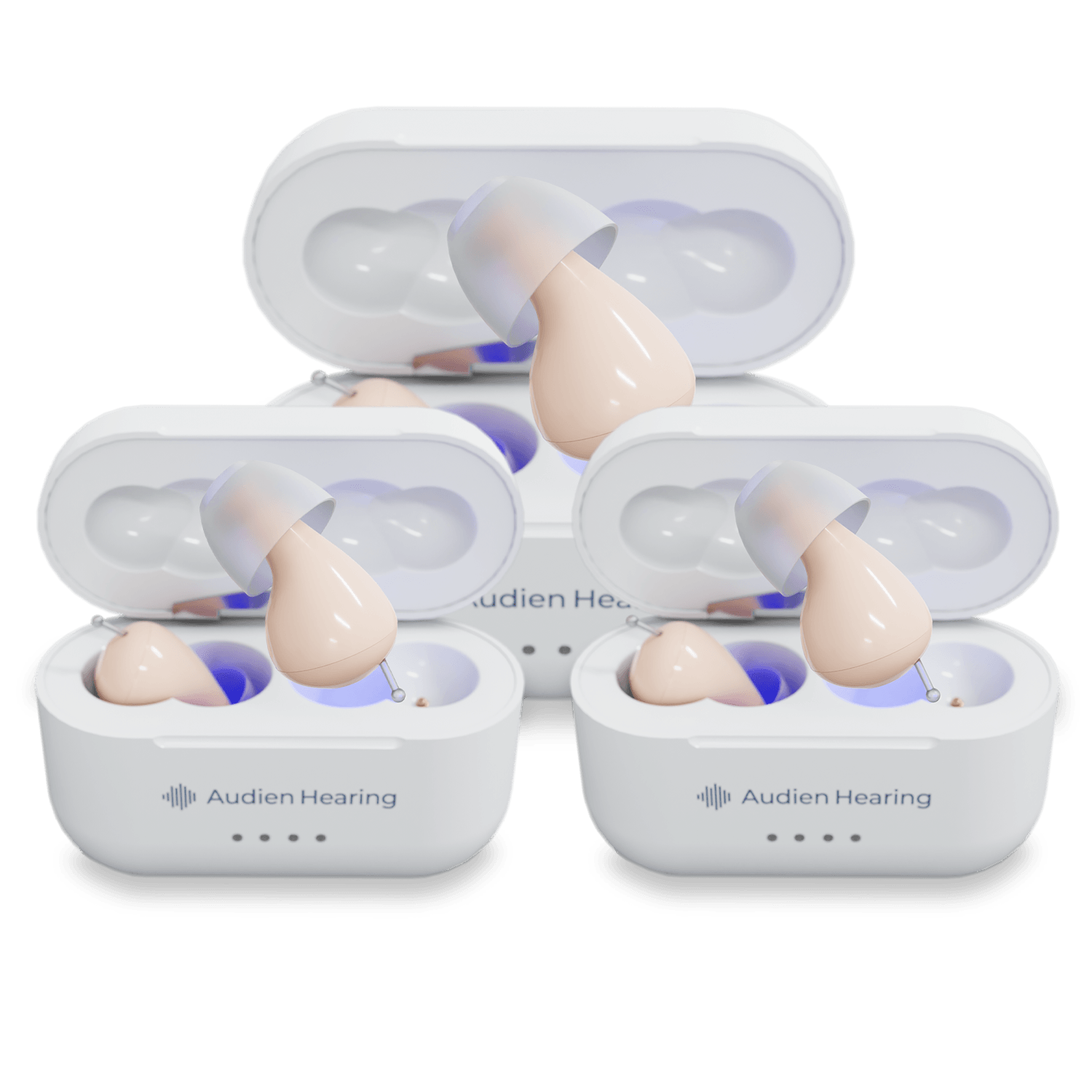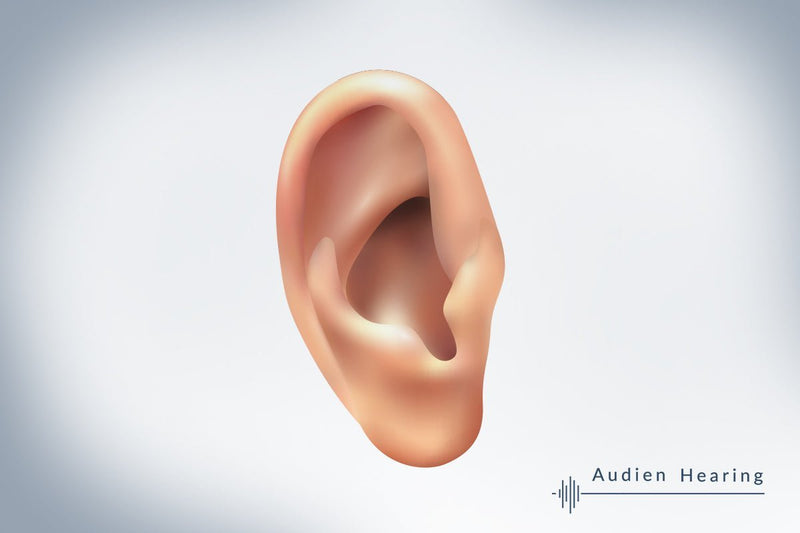Conductive hearing loss is a type of hearing loss that occurs when sound is unable to pass through the outer and middle ear to the inner ear. Even though the major organs responsible for processing and sending sound signals to the brain are located in the inner ear, they won’t have any signal to transmit if the sound is unable to get to them.
Every sound you hear passes through various steps where the sound waves are changed into electrical signals. When sound waves in the air get into the outer ear, they travel through the ear canal and get to the eardrum.
When the eardrum receives the sound waves, it begins to vibrate. These vibrations are sent to these tiny bones (malleus, incus, and stapes) located in the middle ear.
These tiny bones amplify the sound of the vibrations and then send them to an organ in the inner ear known as the cochlea. The cochlea is filled with fluid. This fluid begins to ripple when the vibration gets to it. This rippling causes a traveling wave to form along the basilar membrane.
The basilar membrane is an elastic partition that splits the cochlea into the upper and lower part. It is the base on which the cochlea sits.
When the wave is formed on the basilar membrane, the hair cells in the inner ear detect the vibration and begin to move up and down.
As the hair cells move up and down, their projections, known as stereocilia, bump against the overlying structure and bend. When the bend, the stereocilia open up, a chemical rushes into the cells; this creates an electric signal.
The auditory nerve carries this electric signal to the brain. The brain then interprets the electric signals into recognizable and understandable sounds.
Having understood the detailed process of how hearing occurs, you must have already discovered the key role played by the outer and middle ear. If the inner ear is perfectly functional, but no sounds are coming in from the outer and middle ear, the inner ear cannot generate any electrical signals.
Conductive hearing loss often occurs as a result of damage to either the outer ear or middle ear. Damage to both the outer and middle ear can occur together, though many cases involve one more than the other.
In some cases, sound may be able to get into your ear, but the sound level is reduced on its way to the inner ear. This makes it hard to hear soft sounds, and loud sounds also become muffled.
Causes of Conductive Hearing Loss
Before we proceed to look at the symptoms of conductive hearing loss, let's examine some of its causes. The causes we will be examining in this section will be both outer ear and middle ear causes.
1. Earwax Blockage
Earwax blockage is also known as Cerumen Impaction. It occurs when there is an accumulation of earwax in the ear canal which makes hearing difficult.
Earwax produced at the normal level is good for your ears. The wax is produced by the body to prevent debris, fluids, and bacteria from getting into the inner ear. The built-up wax normally works its way out of the ear naturally. But when it is produced in excess, your ears may have a hard time getting rid of it.

When the ear is unable to get rid of the wax, it begins to accumulate, and in most cases, it solidifies. This blockage affects the flow of sound that is being transmitted into the ear.
Two major reasons cause earwax blockage. The first is when earwax is pushed further into the ear canal by the use of objects like cotton buds. The second cause of earwax blockage is the presence of solid excess wax.
Conductive hearing loss from earwax buildup is typically temporary and resolves once the blockage is removed. In many cases, earwax can be safely cleared at home using over-the-counter methods, but some individuals may require removal by a healthcare provider.
Once the excess earwax is cleared from the ear canal, sound can travel more effectively through the outer and middle ear to reach the inner ear.
2. Fluid in the Ear
Fluid in the ear is also known as Otitis Media with Effusion (OME), Middle Ear Effusion (MEE), or Serous Otitis Media (SOM). It refers to an accumulation of fluid behind the eardrum in the middle ear that can occur when the Eustachian tube (also called the auditory tube) is not functioning properly.
The fluid that collects in the middle ear is called serous fluid, and it is typically clear or yellowish in color. This buildup happens when the Eustachian tube becomes inflamed or blocked and is unable to properly ventilate the middle ear or allow fluid to drain.
Fluid in the ear can be caused by ear infections, colds, or allergies, all of which may lead to inflammation that disrupts normal drainage through the Eustachian tube.
Children are more prone to middle ear fluid than adults due to differences in Eustachian tube anatomy—it is shorter and more horizontal in young children, making drainage more difficult. In adults, the tube is longer and more angled, which typically allows better fluid clearance.
OME often resolves on its own within a few weeks. If it persists or causes hearing difficulties, a healthcare provider may evaluate and recommend treatment options to help remove the fluid or relieve pressure.
3. Eustachian Tube Dysfunction
The eustachian tube is a small passageway that connects the middle ear to the throat. It is responsible for draining fluid from the middle ear and equalizing air pressure between the middle ear and the environment.
The eustachian tube is usually closed to prevent pressure buildup but opens briefly when you swallow, yawn, chew, or sneeze.
When this tube becomes clogged or doesn’t function properly, the condition is called eustachian tube dysfunction.
When this occurs, you may experience a feeling of fullness in your ear, muffled hearing, or discomfort.
Eustachian tube dysfunction can be caused by viral infections such as colds, sinus infections, or allergies that lead to inflammation and excess mucus. It can also result from altitude changes, such as during hiking, air travel, or elevator rides.
In many cases, eustachian tube dysfunction resolves on its own or with basic home treatments. If symptoms are persistent or severe, medical attention from an ENT doctor may be required.
4. Perforated Eardrum
A perforated eardrum, also known as a ruptured eardrum or tympanic membrane perforation, is a tear or hole in the thin tissue that separates the ear canal from the middle ear.
The eardrum plays a vital role in transmitting sound to the middle ear. A perforation can cause conductive hearing loss, and the size and location of the tear can affect the severity.
Causes of a perforated eardrum include middle ear infections, barotrauma (pressure changes such as during flying or diving), loud noise exposure, direct trauma to the ear, foreign objects inserted into the ear, and severe head injury.
Fortunately, most perforated eardrums heal on their own within a few weeks. If healing doesn’t occur naturally, a medical patch or surgical repair may be recommended. Once healed, hearing usually returns to normal.
5. Microtia
Microtia is a congenital condition characterized by underdevelopment or malformation of the external ear. It typically occurs during the first trimester of pregnancy.
While the exact cause is unknown, microtia has been associated with factors such as maternal diabetes, exposure to certain medications (like Accutane), alcohol use during pregnancy, and possible nutritional deficiencies such as low folic acid.
Microtia is classified by severity:
Grade I
The external ear appears small but is mostly present. The ear canal may be narrowed or absent.
Grade II
The upper part of the external ear is malformed, while the lower third, including the earlobe, is typically normal. The ear canal is narrowed or missing.
Grade III
The external ear is minimally developed, with limited cartilage or a small earlobe. The ear canal is absent.
Grade IV (Anotia)
This is the most severe form and involves complete absence of the external ear and ear canal.
Children with microtia often experience varying degrees of conductive hearing loss, which may be partial or total and affect one or both ears. In some cases, this hearing loss may also contribute to speech and language delays if not addressed early.
Conductive Hearing Loss Symptoms
Here are some of the early symptoms of conductive hearing loss:
-
Difficulty hearing on the phone.
-
Misunderstanding speech, especially in noisy environments.
-
Increasing the volume of the television or radio above normal levels.
-
Difficulty keeping up with conversations.
-
Frequently asking others to repeat themselves.
-
Listening fatigue or stress from needing to concentrate more on hearing.
Early Symptoms of Conductive Hearing Loss
Here are some of the early symptoms of conductive hearing loss:
- Difficulty hearing on the phone.
- Difficulty hearing and misunderstanding what other people are saying, especially in crowded places.
- Increasing the volume of television or radio above the normal volume range.
- Difficulty keeping up with conversations.
- Constantly asking for repetition.
- Fatigue or stress. This is associated with having to concentrate on hearing what is being said.
General Symptoms of Conductive Hearing Loss
Common symptoms of conductive hearing loss—regardless of the cause—can include:
-
Perception of muffled or diminished sound.
-
Sudden hearing loss in one or both ears.
-
Difficulty understanding speech, particularly in noisy places.
-
A sensation of fullness or pressure in the ear.
-
Earache or headache, depending on the underlying condition.
-
Hearing better in one ear than the other.
-
Difficulty hearing soft sounds, whether low- or high-pitched.
-
Difficulty hearing consonants.
-
Requesting others to speak more slowly, clearly, or loudly.
-
Withdrawal from conversations due to hearing difficulties.
-
In some cases (especially with infection), foul-smelling yellow or clear discharge may occur.
Symptoms of Conductive Hearing Loss in One Ear
Unilateral conductive hearing loss (affecting one ear) may be harder to notice because hearing in the other ear is normal. Symptoms include:
-
Difficulty localizing where sound is coming from.
-
Trouble differentiating overlapping sounds.
-
Greater sensitivity to background noise.
-
Poor hearing from one side or direction.
-
Difficulty hearing at a distance or in noisy environments.
Symptoms of Conductive Hearing Loss in Children and Babies

Although this guide is focused on adults, pediatric symptoms may still be helpful to recognize:
-
Responding to visual cues but not auditory ones.
-
Not turning toward voices or loud noises by 4–6 months.
-
Delayed speech or unclear articulation.
-
Speaking unusually loudly or increasing TV volume excessively.
-
Inconsistent responses to sound.
-
Asking for repetition or responding inappropriately to questions.
Symptoms by Underlying Cause
Earwax Blockage:
-
Sensation of fullness or pressure in the ear.
-
Diminished hearing in the affected ear.
-
Tinnitus (ringing in the ear).
-
Possible dizziness or imbalance.
-
Occasional discomfort or earache.
-
Ear discharge if infection is present.
Fluid in the Ear:
-
Muffled hearing or a plugged sensation.
-
Ear pain, especially with altitude changes.
-
Tinnitus or ringing.
-
In rare cases, vertigo or imbalance.
-
Children may exhibit behavioral changes or academic difficulties.
Eustachian Tube Dysfunction:
-
Ear pressure or fullness.
-
Muffled hearing.
-
Popping, clicking, or tickling sensations.
-
Discomfort or pain, especially with altitude changes.
-
Tinnitus.
-
Balance difficulty in some cases.
Perforated Eardrum:
-
Sudden hearing loss in the affected ear.
-
Drainage of clear, pus-like, or bloody fluid.
-
Tinnitus.
-
Ear pain, which may resolve quickly.
-
Occasional dizziness or nausea if the inner ear is affected.
Conclusion
While some causes of conductive hearing loss may be out of your control, it's important to protect your ears whenever possible.
Avoid inserting objects like cotton swabs or bobby pins into your ears, as this can push wax deeper and lead to a blockage. Earwax buildup is a common and preventable cause of conductive hearing loss.
Although loud noise is more often linked to sensorineural hearing loss, severe acoustic trauma can sometimes damage the eardrum, which may contribute to conductive hearing problems—so it’s still wise to avoid prolonged exposure to loud environments.
If you notice any hearing difficulties or experience the symptoms described above, don't hesitate to speak with a healthcare professional.
